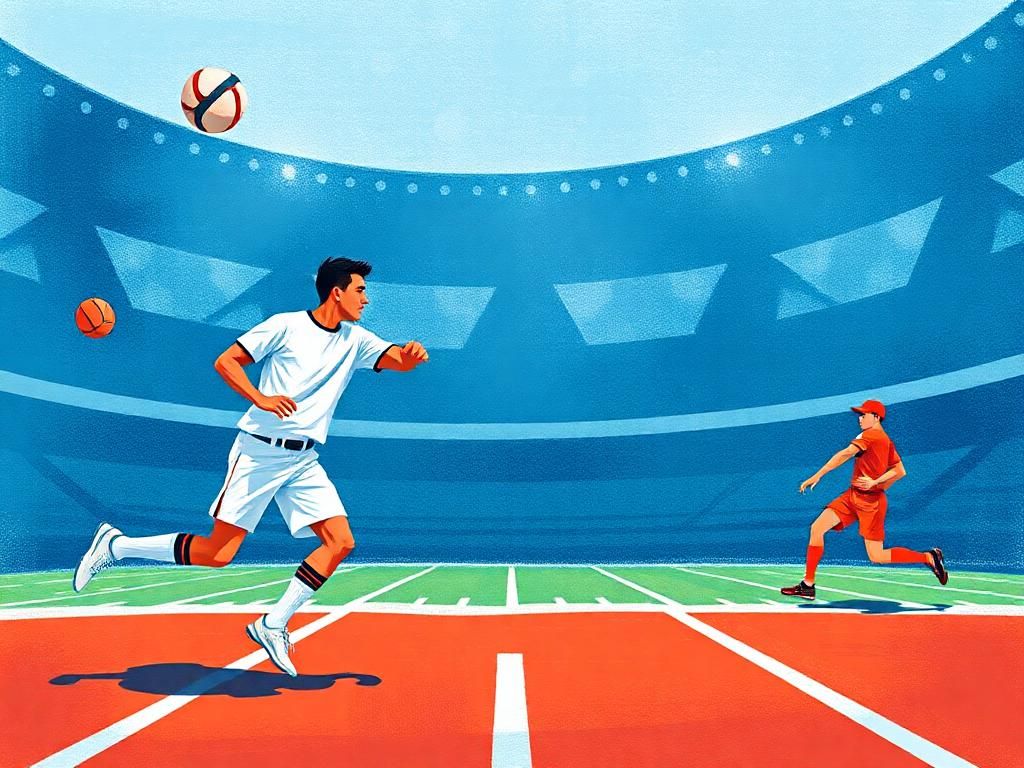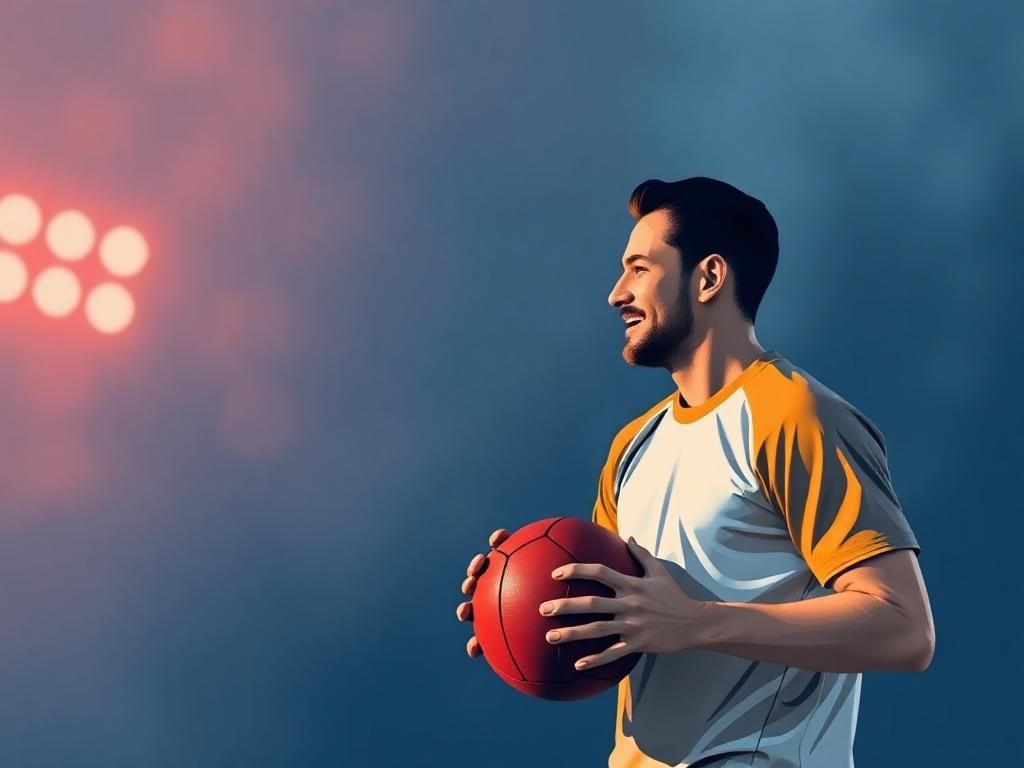The sports urge is an intense desire or motivation to engage in sporting activities that encapsulates not only casual interest but also passionate involvement. It reflects the drive many individuals have to participate, whether as a hobby or a commitment. The significance of the sports urge in society is profound, as it plays a crucial role in our culture by fostering community engagement, enhancing personal well-being, and creating social connections. In societies worldwide, sports have consistently served as a bridge among different cultures, promoting unity and shared experiences. Alongside this, participating in sports offers various psychological and social benefits, greatly contributing to individual and collective mental health.
The Psychological Aspects of Sports Urge
Motivation Behind Sports Participation
Understanding the motivations driving the sports urge is essential. These motivations can either be intrinsic, fueled by personal satisfaction, or extrinsic, driven by external rewards such as recognition or competition. For many, achieving personal goals in sports can be a fulfilling experience, becoming a source of joy and a path to physical and mental health.
Emotional Connection
The emotional aspect of the sports urge cannot be overlooked. Engaging in sports fosters a sense of team spirit and camaraderie among participants. Physical activity triggers the release of endorphins, often referred to as “feel-good” hormones, which can drastically improve one’s mood and overall well-being.
The Role of Identity
Sports profoundly shape both personal and social identities. For many, their involvement in sports is a defining feature of who they are. Cultural significance varies globally; for instance, in the United States, sports such as American football and basketball are integral to national identity, whereas football (or soccer) holds a similar position in numerous countries around the globe. The sports urge enables individuals to connect with their culture and heritage while promoting unity.
Factors Influencing Sports Urge
Personal Factors
Several personal factors affect one’s sports urge. Age, physical fitness level, and previous sports experience can either enhance or restrict sports participation. Younger individuals often have more opportunities to participate than adults, particularly in school settings, while those with prior experience tend to have a stronger urge to engage in sports.
Environmental Factors
The availability of sports facilities and resources significantly impacts the sports urge. Access to local parks, gyms, and recreational centers can motivate individuals to engage more actively in sports. Additionally, the influence of family and peers plays a pivotal role; supportive environments often promote stronger levels of participation.
Media Influence
In today’s digital age, media and technology shape the sports urge uniquely. Coverage of major events and the rising popularity of social media platforms have broadened interest levels in various sports. The immediate access to sports news and online communities can inspire individuals to engage more actively in sporting activities. For instance, platforms like ESPN provide comprehensive coverage that can spark excitement about sports.
The Benefits of Having a Sports Urge
Physical Health Benefits
Regular participation in sports produces substantial physical health benefits. Improved fitness and wellness are immediate rewards, while long-term advantages include reduced risk of chronic diseases, increased life expectancy, and enhanced overall quality of life. Cultivating the sports urge can shape healthier lifestyle choices and habits.
Psychological Well-being
Sports are known for their positive impact on mental health, providing essential stress relief and improving emotional resilience. Regular physical activity leads to lower levels of anxiety and depression. The discipline required in sports participation also contributes to personal growth and self-control.
Social Benefits
The community aspect stemming from the sports urge is tremendously significant. Engaging in sports often leads to the formation of friendships and support networks. Team sports, in particular, teach individuals the value of collaboration and help develop interpersonal skills, essential for personal and professional success.

Overcoming Barriers to Sports Participation
Identifying Common Barriers
Many individuals face barriers that deter their sports engagement, such as lack of time, resources, or fear of injury and failure. Identifying these challenges is the first step towards overcoming them and igniting the sports urge.
Strategies to Foster Sports Engagement
Implementing strategies like setting realistic goals, finding suitable sports that align with personal interests, and focusing on enjoyment can significantly enhance sports participation. Individuals are encouraged to explore diverse sports to identify what resonates with them, thus fostering a stronger sports urge.
Community Programs and Initiatives
Local organizations play a crucial role in promoting sports engagement, providing resources, and creating opportunities for participation. Successful programs, such as those offered by the YMCA and local sports clubs, exemplify how community efforts can significantly enhance the sports urge and improve overall community health.
Cultivating the Sports Urge in Different Populations
Youth Engagement
Early exposure to sports is critical for developing a lasting sports urge. Programs aimed at encouraging youth participation can foster lifelong interests in physical activity and health. Schools and community organizations should prioritize offering diverse sports options for children to explore their interests.
Adult Participation
As individuals grow older, their sports engagement may diminish due to various factors, including time constraints and lack of motivation. Addressing these needs and designing initiatives that promote lifelong involvement in sports can help sustain the sports urge through adulthood.
Encouraging Underrepresented Groups
Marginalized populations often face unique challenges when it comes to sports participation. Addressing issues such as accessibility, availability, and cultural significance of sports can promote inclusion. Successful case studies of inclusive sports programs illustrate how targeted efforts can effectively engage underrepresented groups.
The Future of Sports Urge
Trends Shaping Sports Participation
The sports urge is evolving with the rise of digital sports and e-sports. This expansion into the realm of technology has the potential to introduce a broader audience to the realm of sports through virtual engagement. The impact of technology in training and participation is also set to revolutionize how athletes prepare and engage in sports.
Sustainability in Sports
Modern sports culture is experiencing a shift towards sustainability, with growing awareness of the environmental impact of sporting events. Initiatives aimed at promoting eco-friendly practices in sports are gaining traction, aligning the sports urge with modern values of responsibility and conservation.
Evolving Definitions of Sports
As the world changes, so does the definition of sports. Expanding what constitutes “sports” encourages diversity and inclusion in sports culture. Understanding the broadening perspectives on sports participation allows for greater engagement across various demographics, enriching the global sporting landscape.

Conclusion
Recap of Key Points
Understanding the sports urge reveals its importance in personal and societal contexts. The motivations behind participation, psychological impacts, and benefits are vital components of a healthy lifestyle and a cohesive community.
Call to Action
Readers are encouraged to explore their local sporting opportunities. By participating in sports, whether casually or competitively, individuals can embrace the sports urge and contribute to their well-being and community health. Programs and initiatives are widely available for exploration, fostering both interest and engagement.
| Benefit Category | Specific Benefits |
|---|---|
| Physical Health | Improved fitness, reduced chronic disease risk |
| Psychological Well-being | Stress relief, enhanced mental health |
| Social Interaction | Friendship formation, teamwork skills |
FAQ
What is the sports urge?
The sports urge refers to an individual’s desire or drive to engage in sports, encompassing both casual enjoyment and passionate commitment.
What motivates people to participate in sports?
Motivations can be intrinsic (personal fulfillment) or extrinsic (external rewards like accolades). Both play significant roles in fostering a sports urge.
How does sports participation benefit mental health?
Engaging in sports can reduce anxiety and stress while enhancing overall mood through endorphin release, which significantly boosts mental well-being.
What barriers exist to sports participation?
Common barriers include lack of time, resources, fear of injury, or previous negative experiences in sports. Identifying these barriers is the first step towards overcoming them.
What should community programs focus on?
Successful community programs should prioritize accessibility, inclusivity, and provide resources to promote diverse sporting opportunities for all demographics.
How can technology shape the future of sports?
Technology, especially digital sports and e-sports, expands access to sports while revolutionizing training, fitness, and engagement methods.
Why is sustainability important in sports?
Sustainable practices in sports help reduce environmental impacts, aligning sporting events with modern values and promoting overall responsibility.
How can I find local sports opportunities?
Local sports organizations, community centers, and online platforms can provide information about available sports programs that fit your interests.
Are there programs for underrepresented groups in sports?
Yes, various initiatives aim to engage marginalized populations, focusing on accessibility and inclusion to foster participation in sports.
What are the long-term benefits of cultivating a sports urge?
Cultivating a sports urge leads to lifelong health benefits, improved social connections, and enhanced quality of life through ongoing physical activity.